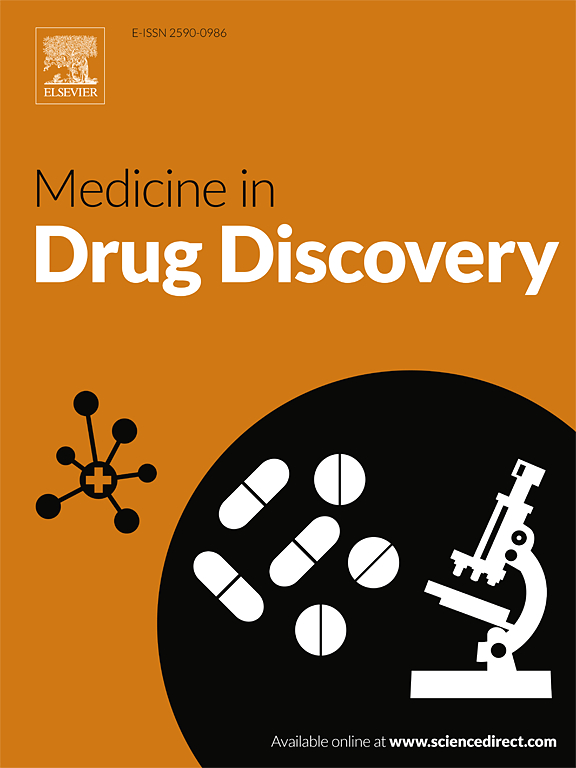用于药物发现和蛋白质设计的生成式人工智能:人工智能驱动的分子科学的下一个前沿
Q2 Medicine
引用次数: 0
摘要
生成式人工智能(AI)已经成为分子科学领域的一个颠覆性范例,通过数据驱动的建模,实现了化学和蛋白质组学空间的算法导航和构建。本文系统地描述了深层生成模型的理论基础、算法架构和转化应用,包括变分自编码器(VAEs)、生成对抗网络(GANs)、自回归变压器和基于分数的去噪扩散概率模型(ddpm),这些模型在合理设计生物活性小分子和功能蛋白方面的应用。我们研究了潜在空间学习、概率流形探索和强化学习在逆分子设计中的作用,重点是优化药理学相关目标,如ADMET谱、合成可及性和靶标亲和力。此外,我们调查了基于图的分子生成框架,llm引导的蛋白质序列建模和基于扩散的结构预测管道(例如,RFdiffusion, FrameDiff)的进展,这些进展在从头开始的蛋白质工程和构象采样中展示了最先进的性能。生成式人工智能还通过人工智能增强的分子对接(例如DiffDock)、端到端结合亲和预测和量子化学信息的神经电位,催化了基于结构的药物发现的范式转变。我们探索了生成模型与贝叶斯反合成计划、超大化学语料库上的自监督预训练以及精确治疗中组学衍生特征的多模态集成的收敛性。最后,我们讨论了人工智能设计的配体和蛋白质已经发展到临床前和临床验证的转化里程碑,并推测了未来自主分子设计生态系统中生成式人工智能、闭环自动化和量子计算的合成。本文章由计算机程序翻译,如有差异,请以英文原文为准。
Generative AI for drug discovery and protein design: the next frontier in AI-driven molecular science
Generative artificial intelligence (AI) has emerged as a disruptive paradigm in molecular science, enabling algorithmic navigation and construction of chemical and proteomic spaces through data-driven modeling. This review systematically delineates the theoretical underpinnings, algorithmic architectures, and translational applications of deep generative models—including variational autoencoders (VAEs), generative adversarial networks (GANs), autoregressive transformers, and score-based denoising diffusion probabilistic models (DDPMs)—in the rational design of bioactive small molecules and functional proteins. We examine the role of latent space learning, probabilistic manifold exploration, and reinforcement learning in inverse molecular design, focusing on optimization of pharmacologically relevant objectives such as ADMET profiles, synthetic accessibility, and target affinity. Furthermore, we survey advancements in graph-based molecular generative frameworks, LLM-guided protein sequence modeling, and diffusion-based structural prediction pipelines (e.g., RFdiffusion, FrameDiff), which have demonstrated state-of-the-art performance in de novo protein engineering and conformational sampling. Generative AI is also catalyzing a paradigm shift in structure-based drug discovery via AI-augmented molecular docking (e.g., DiffDock), end-to-end binding affinity prediction, and quantum chemistry-informed neural potentials. We explore the convergence of generative models with Bayesian retrosynthesis planners, self-supervised pretraining on ultra-large chemical corpora, and multimodal integration of omics-derived features for precision therapeutics. Finally, we discuss translational milestones wherein AI-designed ligands and proteins have progressed to preclinical and clinical validation, and speculate on the synthesis of generative AI, closed-loop automation, and quantum computing in future autonomous molecular design ecosystems.
求助全文
通过发布文献求助,成功后即可免费获取论文全文。
去求助
来源期刊

Medicine in Drug Discovery
Medicine-Pharmacology (medical)
CiteScore
8.30
自引率
0.00%
发文量
30
审稿时长
21 days
期刊介绍:
 求助内容:
求助内容: 应助结果提醒方式:
应助结果提醒方式:


